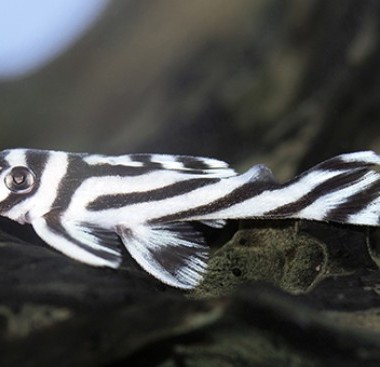Cattle Can Help Conserve Grasslands and Wildlife
A Revelation!
By: Staff Date: 01/16/2012 Category: | Book Reviews | Farm and Ranch Almanac | Wildlife Journal |

The Prairie Keepers: Secrets of the Grasslands by Marcy Houle: 1995; 266 pages; Addison Wesley, publisher, New York; $8.80 in paperback from Amazon Books through the NAIA website, www.naiaonline.org.
Wildlife biologist Marcy Houle jumped at the chance to get out of the classroom and back into the field when the job opened up in the US Fish and Wildlife Service. She was doubly pleased that the field work involved raptors, those predatory birds she had come to respect and love. A cattle-hating environmentalist, she packed her bags and her anti-ranching prejudices and headed to Oregon's Zumwalt Prairie, a 200-square-mile remnant grassland where livestock and hawks coexisted in peaceful harmony.
She arrived in Oregon with the belief that cattle and cattlemen were enemies of the land. Before she left a few months later, she had learned to respect the people who ranched on and near the prairie and to understand that proper management of cattle enhances prairie habitat for wildlife. Between her arrival in April and her departure in September, her arrogance gave way to tolerance, a grudging appreciation, and finally admiration of the conservation ethic shared by ranchers, an ethic that allows for use of the land while protecting its integrity and enjoying its beauty.
Zumwalt Prairie is home to an unusually high concentration of hawk nests and single birds during the summer breeding season. Although they are more accustomed to open areas uninhabited by man, red-tailed, ferruginous, and Swainson's hawks - the broad-winged prairie species - gather in this cattle-ranching area in huge numbers to raise their chicks. Houle's task was to find the nests and count and band the chicks to begin to analyze the relationship between the birds and their man-managed habitat. She worked on her own because there was no money in the FWS budget for an assistant. Faced with the daunting task of covering the prairie by herself, she first tolerated then sought the help of local residents.
Located in remote northeastern Oregon, Zumwalt Prairie is an ocean of native grasses interspersed with wildflowers and home to hawks, owls, ground squirrels, badgers, coyotes, deer, elk, porcupines, and more. Driving around the prairie and crossing fenced pastures on foot, Houle located more than 50 active nests of the target species and many nests of other predatory birds such as marsh hawks, short-eared owls, great-horned owls, barn owls, golden eagles, and kestrels the first month. By the end of June, she had located 118 buteo nests. The count was unexpectedly high - and in areas where there were fences and cattle!
Locating the nests was only half the job; Houle had to revisit them weeks later to count and band the hatchlings and to record reproductive successes. Each day on the prairie brought new revelations about the birds and about the effect of cattle on the range. As she became better acquainted with the ranchers, they explained the interrelationships between cattle and prairie that allowed coexistence and the management techniques (fencing riparian areas, rotation of grazing areas, keeping cattle off the prairie in spring until the grasses toughen and the elk have moved on, distributing stock tanks for water throughout the prairie to keep the cattle moving) that kept cattle from destroying stream banks or overgrazing the lush prairie.
Climbing trees and rock outcrops to grab and band half-grown hawks can be dangerous, but Houle persevered. When it became obvious that she alone could not band birds in more than 100 nests, she recruited 19 "wranglers" for her "buteo rodeo." For three days, ranchers and government biologists worked together in uneasy cooperation to band chicks in 104 nests. Most of the nests produced two or more healthy offspring, which makes the Zumwalt one of the highest nesting concentrations in North America.
Throughout the book, Houle marvels at the beauty of the prairie and the abundance of wildlife. In her final chapter, she concludes: "With sadness I saw the bitter war over the western grasslands being waged between two disparate cultures - environmentalists and ranchers - for what it really is: a tragedy. It's a war that should never be. If the truth were only realized, these two archfoes would see they are actually allies in the fight to save rangelands from a future neither side wants.
"Of course, before I came here, I was just as guilty. Like many others, I thought that ranchers and grazing and wildlife could not mix. But over the course of my research and my days and weeks and months in the field, I had come to discover that grazing is only a tool. I had observed that grazing, like fire management or riparian fencing or the replanting of native species, is a mechanism that can change vegetation composition, density, and structure, and as such, change small mammal and bird populations by altering these species' habitat.
"In terms of its consequences, grazing could have varying results. Some, unquestionably, could be detrimental to the resource. These are usually the examples put in front of the public and those on which decisions are made. But as evidenced by my Zumwalt findings, when grazing is done with the top priority given to the native vegetation, when the phenology and physiology of the key plant species and the ecological capability of the resource are kept in mind, grazing can richly enhance wildlife habitat. I was coming to realize that these examples needed public exposure too."
The book is an honest account of coming of age by a scientist interested in solving environmental problems instead of assessing blame or castigating multiple use of land as evil. It is worth an afternoon in an easy chair, space on the bookshelf, and periodic re-reading to remind one of the need to have an open mind.
About The Author
All Authors Of This Article: | Patti Strand |












